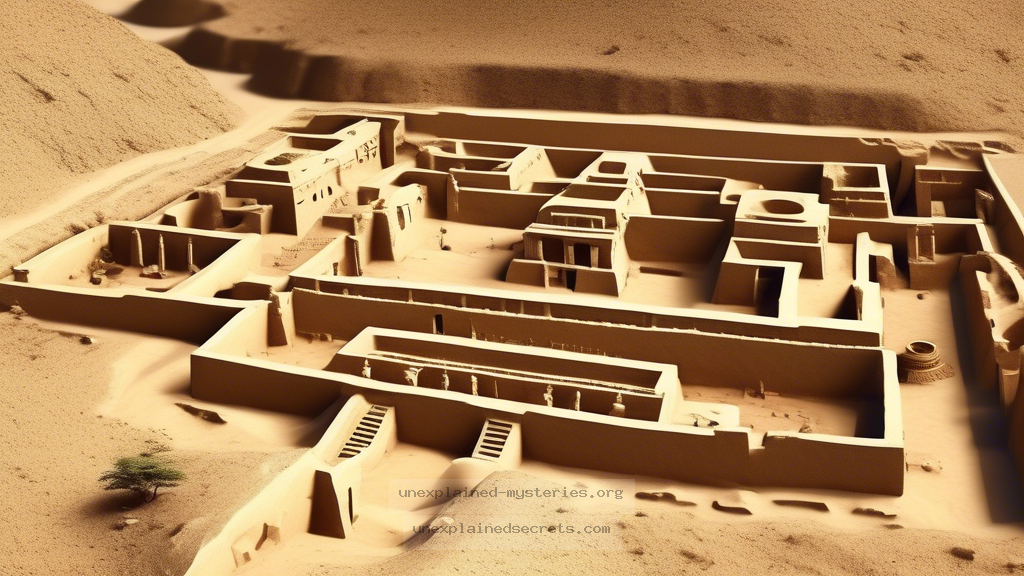What Secrets Lie Behind the Mysterious Disappearance of the Indus Valley Civilization?
What Secrets Lie Behind the Mysterious Disappearance of the Indus Valley Civilization?
The Indus Valley Civilization (IVC), one of the world’s earliest urban cultures, flourished between 2600 and 1900 BCE in what is now Pakistan and northwest India. Its sophisticated cities, advanced drainage systems, and undeciphered script have intrigued scholars and enthusiasts alike. Yet, despite its achievements, the civilization mysteriously declined, leading to a loss of knowledge and culture that has puzzled historians for centuries. Understanding this enigma is vital not only for grasping human history but also for uncovering the reasons behind societal collapses. What led to the downfall of such an advanced civilization? Let’s delve into the mysteries surrounding the Indus Valley Civilization’s disappearance.
Historical Context: The Rise of the Indus Valley Civilization
The Indus Valley Civilization is celebrated for its urban planning, architecture, and social organization. Major cities like Harappa and Mohenjo-Daro were equipped with sophisticated grid layouts, public baths, and extensive drainage systems. The civilization thrived due to its strategic location near the Indus River, which provided fertile land for agriculture and trade routes with neighboring regions.
During its peak around 2500 BCE, the IVC had a population estimated to be over 5 million, making it one of the largest civilizations of its time. Artifacts including intricate pottery, seals, and jewelry indicate a rich cultural life. Yet, by 1900 BCE, the civilization experienced a sudden decline, leading to the abandonment of major urban centers. This abrupt disappearance raises crucial questions about the factors contributing to its downfall.
Core Theories Behind the Disappearance
Several theories attempt to explain the decline of the Indus Valley Civilization. These theories can be classified into environmental, economic, and social factors:
- Climate Change: Evidence suggests that a significant shift in climate, including decreased monsoon rains, may have led to agricultural decline.
- River Changes: The Indus River’s course may have shifted, resulting in flooding or droughts that devastated farming.
- Resource Depletion: Overexploitation of resources, such as timber and water, could have led to unsustainable living conditions.
- Social Unrest: Internal conflicts or invasions from neighboring tribes could have contributed to the civilization’s collapse.
Each of these theories presents a compelling narrative, but evidence supporting them is often circumstantial. Ongoing archaeological efforts are essential to unearth more concrete data.
Practical Implications: What Archaeological Evidence Tells Us
Archaeological excavations in the region have provided vital clues about the IVC’s lifestyle and decline. Artifacts such as weights, seals, and pottery indicate a complex economic system based on trade. However, the lack of weapons and fortifications suggests that warfare was not a dominant factor in its downfall.
Recent studies have shown that the decline in urban centers corresponds with evidence of changing climatic conditions. For instance, sediment analysis from the Indus River and surrounding areas reveals significant fluctuations in rainfall patterns, which may have led to agricultural failure.
Alternative Perspectives: Invasion Theories
While environmental factors dominate the discussion, some researchers propose that the decline of the IVC may have been partly due to invasions by Aryan tribes from the northwest. This theory is largely based on the presence of Indo-European languages and cultural artifacts that appear in the region post-IVC.
The archaeological record, however, presents challenges to this view. The absence of clear evidence of violent conflict or significant cultural disruption in the IVC sites suggests that if an invasion occurred, it might not have been as catastrophic as previously thought. Instead, it could point to a gradual assimilation of cultures rather than a violent takeover.
Common Misconceptions About the Indus Valley Civilization
Several misconceptions surround the IVC, often arising from limited knowledge or sensationalized interpretations:
- Misconception 1: The IVC was solely a trade civilization. Reality: While trade was significant, it was also advanced in urban planning, agriculture, and craftsmanship.
- Misconception 2: The civilization was entirely peaceful. Reality: Evidence of societal stress and potential conflict exists, though not on the scale of other contemporary civilizations.
- Misconception 3: The decline was sudden and catastrophic. Reality: The decline likely occurred over several centuries, influenced by multiple factors.
Best Practices for Investigating Ancient Mysteries
Given the complexities surrounding the Indus Valley Civilization, a comprehensive approach to investigation is essential. Here are some best practices for researchers and enthusiasts:
- Interdisciplinary Collaboration: Involve experts from various fields such as archaeology, climatology, and anthropology to build a holistic understanding.
- Emphasizing Evidence: Base conclusions on tangible evidence rather than speculation. Always cross-reference findings.
- Utilizing Modern Technology: Employ techniques such as satellite imagery and ground-penetrating radar to uncover sites without extensive excavation.
- Engaging Local Communities: Work with local historians and communities to gain insights that may not be documented in academic literature.
Future Developments and Ongoing Research
Research on the Indus Valley Civilization is continually evolving. Recent archaeological discoveries, including urban sites that were previously unknown, are reshaping our understanding of its complexity. Studies into ancient DNA are also providing new insights into the population dynamics of the region.
Furthermore, interdisciplinary collaboration is becoming increasingly critical. For instance, climate scientists are now working alongside archaeologists to understand better how climatic shifts impacted ancient societies.
Conclusion: The Lasting Legacy of the Indus Valley Civilization
The mystery surrounding the disappearance of the Indus Valley Civilization continues to captivate historians, archaeologists, and the public. From climate change to social upheaval, numerous factors may have contributed to its decline. By examining archaeological evidence, exploring alternative perspectives, and embracing interdisciplinary approaches, we can hope to unveil the secrets of this ancient mystery.
Ultimately, the story of the IVC is a poignant reminder of the fragility of civilization and the intricate interplay between environmental conditions and human society. As research progresses, we may uncover even more about this fascinating civilization and its enduring legacy.
Other Articles
Recent Posts
- What Happened to Flight MH370? The Conspiracy Theories That Still Haunt Us
- What Secrets Lurk Within the Walls of the Infamous Trans-Allegheny Lunatic Asylum?
- What Evidence Supports the Existence of Bigfoot in the Pacific Northwest?
- What Happened to the Indus Valley Civilization? Unraveling the Mysteries of Ancient Urban Life
- Can Telepathy Be Scientifically Proven Through Laboratory Evidence?







